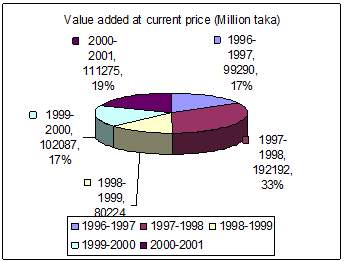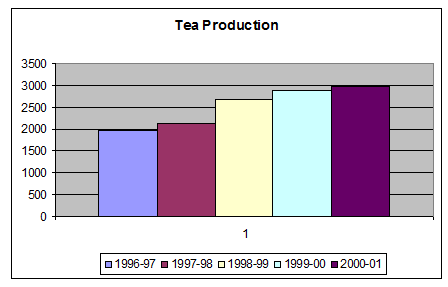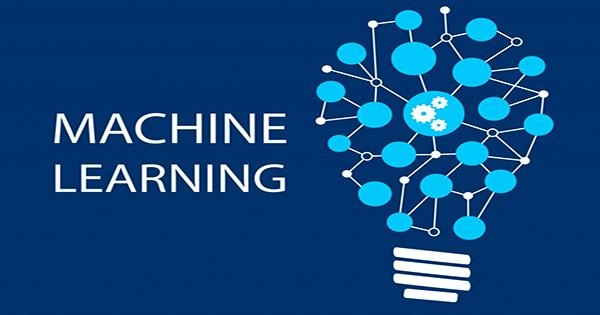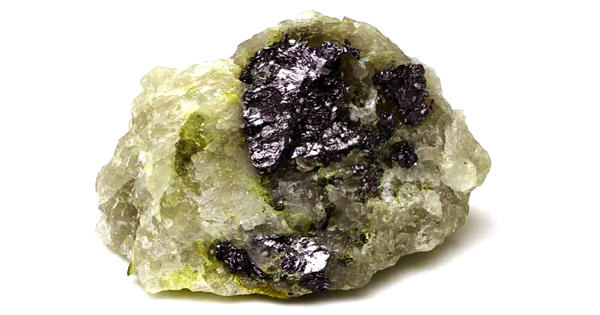Executive Summary
The economy of Bangladesh is the 31th largest economy in the world as measured by purchasing power parity (PPP). Agriculture remains the most important sector of Bangladeshi economy, contributing 19.6 percent to the national GDP and providing employment for 63 percent of the population. The 3 main crops—rice, jute, and tea—have dominated agricultural exports for decades. The demand for rice is constantly rising in Bangladesh with nearly 2.3 million people being added each year to its population of about 120 million. Rice production increases must be achieved at a faster rate than in most other countries, while the land planted to rice is not expanding. Yet, rice is central to Bangladesh’s economy and agriculture, accounting for nearly 18 percent of the Gross Domestic Product (GDP) and providing about 70 percent of an average citizen’s total calorie intake. The rice area totals about 10 million ha and accounts for 75 percent of the total area of agricultural crops, and 93 percent of the total area planted to cereals. The rice sector is by far the most important provider of rural employmentTea is a popular drink all over the world and its scientific name is (Camellia sinensis)
Tea is an evergreen, perennial, cross-pollinated plant and grows naturally as tall as 15m. However, under cultivated condition, the bush height of 60–100 cm is maintained for harvesting the tender leaves for even more than 100 years. The flowers are white in color and grow singly or in pairs at the axils. The fruits are green in color with 2–3 seeds. . This assignment shows the use of NPV and PI. By using NPV and PI we can easily find out the more profitable project from several projects. In this assignment, I try to collect information on rice & tea production, productivity, financial benefit, economical contribution, impact on country, NPV and PI. NPV means Net Present Value. PI represent Profitability Index.
-Chapter 1-
INTRODUCTION
1.1 Introduction
In the introduction chapter we will focus on rice and tea investment appraisal, justification of the assignment, objectives of this project.
Information on Rice and Tea
Rice is the staple food of about 135 million people of Bangladesh. It provides nearly 48% of rural employment, about two-third of total calorie supply and about one-half of the total protein intake of an average person in the country. Rice sector contributes one-half of the agricultural GDP and one-sixth of the national income in Bangladesh. Almost all of the 13 million farm families of the country grow rice. Rice is grown on about 10.5 million hectares which has remained almost stable over the past three decades.
About 75% of the total cropped area and over 80% of the total irrigated area is planted to rice. Thus, rice plays a vital role in the livelihood of the people of Bangladesh.
Tea History of Bangladesh Tea Industry dates back to 1840 when a pioneer tea garden was established on the slopes of the hills in Chittagong where the Chittagong Club now stands. First commercial tea garden was established in 1857 at Mulnichera in Sylhet. The tradition of tea drinking was mentioned in Chinese literature as far back as five thousand years ago, and is still an important part of many Asian cultures. Ironically, the earliest studies on tea and cancer hinted at the possibility that tea might actually cause cancer. Recently, scientists at the Chinese Academy of Preventive Medicine showed that a mixed-tea product containing green tea and tea pigments could help prevent or partially regress pre-cancerous lesions in the mouth (so-called “oral mucosal leukoplakia”) when applied directly to the lesion.
Investment Appraisal
One of the key areas of long-term decision-making that firms must tackle is that of investment – the need to commit funds by purchasing land, buildings, machinery and so on, in anticipation of being able to earn an income greater than the funds committed. In order to handle these decisions, firms have to make an assessment of the size of the outflows and inflows of funds, the lifespan of the investment, the degree of risk attached and the cost of obtaining funds.
The main stages in the capital budgeting cycle can be summarized as follows:
- Forecasting investment needs.
- Identifying project(s) to meet needs.
- Appraising the alternatives.
- Selecting the best alternatives.
- Making the expenditure.
- Monitoring project(s).
We can classify capital expenditure projects into four broad categories:
- Maintenance – replacing old or obsolete assets for example.
- Profitability – quality, productivity or location improvement for example.
- Expansion – new products, markets and so on.
- Indirect – social and welfare facilities.
Even the projects that are unlikely to generate profits should be subjected to investment appraisal. This should help to identify the best way of achieving the project’s aims. So investment appraisal may help to find the cheapest way to provide a new production, even though such a project may be unlikely to earn profits for the company.
Here, we are going to compare between two-investment appraisals. These two are going to be about rice and tea. We will discuss which of these two will be more profitable as an investment.
1.2 Justification
As, I m discussing about rice and tea, we need to know and justify these crops according to the situation in Bangladesh. The economy of Bangladesh is mainly based on the agricultural production. Actually, the agricultural products are running the economical wheel. In this way, both rice and tea are very important. These crops earn us a huge amount of foreign exchange.
Bangladesh has also made major strides to meet the food needs of its increasing population, through increased domestic production. Currently, Bangladesh is the third largest rice producing country in the world.
Tea is one of those cash crops that earn us a good amount of foreign exchange. It is the second crop that gives us most foreign money. Business of tea and its other production are profitable too.
So, we can invest on either jute or tea. But we do not know which of these two is more profitable for an investor. As a matter of fact, we are going to find it out in this project.
In this assignment, I try to collect information on rice & tea production, productivity, financial benefit, economical contribution, impact on country, NPV and PI.
NPV means Net Present Value. PI represent Profitability Index.
1.3 Objectives
The objectives behind this project are-
- To compare between two investments
- To compare the profitability
- To calculate the cost
- To calculate the return
- To calculate the Net Present Value (NPV)
- To calculate the Profitability Index (PI)
- To give suggestion for policy recommendation
- To find out relationship between two project.
-Chapter 2-
OVERVIEW OF THE PROJECT OF
RICE AND TEA OF BANGLADESH
2.1 Introduction
The economy of Bangladesh is the 31th largest economy in the world as measured by purchasing power parity (PPP). It has made significant strides in its economic sector since its independence in 1971. Bangladeshi garments industry is one of the largest and comprehensive industry [citation needed] in the world. Before 1980, Bangladesh’s economy and foreign exchange earnings were driven by the jute industry. However, this industry started to fall dramatically from 1970, when polypropylene products gained popularity over the jute products. Agriculture remains the most important sector of Bangladeshi economy, contributing 19.6 percent to the national GDP and providing employment for 63 percent of the population. The 3 main crops—rice, jute, and tea—have dominated agricultural exports for decades, although the rice is grown almost entirely for domestic consumption. In this project we will find it out the profitability of rice and tea and from which sector we can earn more profit and where we can invest.
2.2 Briefly discussion about rice Production of Bangladesh
The demand for rice is constantly rising in Bangladesh with nearly 2.3 million people being added each year to its population of about 120 million. Rice production increases must be achieved at a faster rate than in most other countries, while the land planted to rice is not expanding. In addition, Bangladesh is faced with production constraints such as drought, lack of irrigation facilities, flooding and salinity of soils, coupled with fluctuating commercial rice prices. Yet, rice is central to Bangladesh’s economy and agriculture, accounting for nearly 18 percent of the Gross Domestic Product (GDP) and providing about 70 percent of an average citizen’s total calorie intake. The rice area totals about 10 million ha and accounts for 75 percen of the total area of agricultural crops, and 93 percent of the total area planted to cereals. The rice sector is by far the most important provider of rural employment
Table: Rice
| Aus | Aman
| Boro
| All Season
| ||||||||||||
| MV | LV | total | MV(%) | MV | LV | Total | MV(%) | MV | LV | Total | MV(%) | Total | Grand total | MV(%) | |
| 2000-01 | 0.9 | 0.91 | 1.81 | 49.72 | 6.94 | 4.31 | 11.25 | 61.69 | 11.55 | 0.37 | 11.92 | 96.90 | 19.39 | 24.98 | 77.62 |
| 2001-02 | 0.90 | 0.91 | 1.81 | 49.72 | 6.81 | 3.92 | 10.73 | 63.47 | 11.41 | 0.35 | 11.76 | 97.02 | 19.12 | 24.30 | 78.68 |
| 2002-03 | 0.95 | 0.9 | 1.85 | 51.35 | 7.14 | 3.97 | 11.11 | 64.27 | 11.87 | 0.35 | 12.22 | 97.14 | 19.96 | 25.18 | 79.27 |
| 2003-04 | 0.94 | 0.9 | 1.84 | 51.09 | 7.53 | 3.99 | 11.52 | 65.36 | 12.43 | 0.41 | 12.84 | 96.81 | 20.90 | 26.20 | 79.77 |
| 2004-05 | 0.86 | 0.9 | 1.50 | 57.33 | 6.69 | 3.15 | 9.84 | 67.9 | 13.45 | 0.39 | 13.84 | 97.18 | 21.00 | 25.18 | 83.4000 |
Production (‘Million Metric Ton) in Bangladesh
Here we are showing the value added at current price of rice of five years –
| Year | Value added at current price (Million taka) |
| 1996-1997 | 99290 |
| 1997-1998 | 192192 |
| 1998-1999 | 80224 |
| 1999-2000 | 102087 |
| 2000-2001 | 111275 |
Now we will see the graph of the value added at current price rice of five years

2.3 Briefly discussion about Tea Production of Bangladesh
Tea is a popular drink all over the world and its scientific name is (Camellia sinensis)
Tea is an evergreen, perennial, cross-pollinated plant and grows naturally as tall as 15m. However, under cultivated condition, the bush height of 60–100 cm is maintained for harvesting the tender leaves for even more than 100 years. The flowers are white in color and grow singly or in pairs at the axils. The fruits are green in color with 2–3 seeds. The leaf is the main criterion by which the three types of tea are classified as follows.
- Assam type: biggest leaves,
- China type: smallest leaves, and
- Cambod: intermediate leaves.
In Bangladesh there are three kinds of ownership of tea gardens: foreign owned sterling companies, Bangladeshi Joint Stock Companies and privately owned proprietary tea estates. In early 1990s, a total of 12 sterling companies were in tea business. They owned 26 gardens; all located in Maulvibazar and Habigang districts. Fifty Bangladeshi companies owned and operated 73 gardens, of these the National Tea Company owned 12 and 57 were under proprietorship management.
Now we will see the value added at current price of tea of five years-
| Year | Value added at current price (Million taka) |
| 1996-1997 | 1979 |
| 1997-1998 | 2118 |
| 1998-1999 | 2669 |
| 1999-2000 | 2875 |
| 2000-2001 | 2965 |
Here is the graph of see the value added at current price of tea of five years.

-Chapter 3-
PROFITABILITY MEASUREMENT
3.1 Introduction
In this chapter we will know about the meaning of Profit, Net Present Value (NPV), and Profitability Index (PI) and about the rules, which we can accept or rejected. Here we will also calculate the cost of rice and tea, the return of the investment of rice and tea, the net present value and the profitability index of rice and tea.
Profit
Profit means the net earning from an investment.
We can find profit by calculating-
Profit = Net Income – Net Cost
Net present value (NPV)
NPV is a technique where cash inflows expected in future years are discounted back to their present value. This is calculated by using a discount rate equivalent to the interest that would have been received on the sums, had the inflows been saved, or the interest that has to be paid by the firm on funds borrowed.
We can find NPV by calculating-
NPV= Present value of total cash inflows – Initial investment (cost)
Profitability Index (PI)
Profitability index is the ratio of return and cost. Profitability index is an index that attempts to identify the relationship between the cost and the benefit of a proposed project through the use of a ratio calculated as:
PI= Present value of total cash inflows / Initial investment (cost)
Rules
- If PI is greater then 1 (PI> 1) then the project will be accepted.
- If PI is less then 1 (PI< 1) then the project will be rejected.
- If PI is equal to 1 (PI =1) then the project can be accepted or rejected.
3.2 Calculation of the Investment in Production of Rice and Tea
Now it will be determined the cost and return of the production of the rice project. The initial investments (cost) of rice production are-
| Costs | Taka |
| Land (For 1 year) | 20000.00 |
| Labor | 5000.00 |
| Seed (1kg) | 550.00 |
| Fertilizer | 2200.00 |
| Insecticide | 575.00 |
| Tiller | 2000.00 |
| Transport | 1400.00 |
| Others | 600.00 |
| Total | 32325.00 |
Total cost = 32325.00
We also need capital to invest for tea production as fixed and variable cost. We need land (Fixed cost), labor, plant, fertilizer, insecticide, tiller, transports (Variable costs), etc.
Now it will be determined the cost and return of the production of the tea project. The initial investments (cost) of tea production are-
| Costs | Taka |
| Land (For 1 year) | 20000.00 |
| Labor | 3500.00 |
| Plant (500 pc) | 2000.00 |
| Fertilizer | 3500.00 |
| Insecticide | 1000.00 |
| Tiller | 1000.00 |
| Transport | 1400.00 |
| Others | 700.00 |
| Total | 33100.00 |
Total cost = 33100.00
3.3 Calculation of the Return in Production of Rice and Tea
Probable Return of rice:
| Outputs | Taka |
| Raw rice (2500 kg @ 15.00 tk per kg) | 37500.00 |
| By product (1000 kg @ 2.00 tk per kg) | 2000,00 |
| Total | 39500.00 |
Total Return = 39500.00
Probable Return of Tea:
| Outputs | Taka |
| Raw Tea (1800 kg @ 26.00 tk per kg) | 46800.00 |
| Total | 46800.00 |
Total Return = 46800.00
3.4 Calculation of NPV in Production of Rice and Tea
NPV (Net Present Value) of rice production:
NPV = Present value of total cash inflows – Initial investment (cost)
= 39500.00-32325.00
= 7175.00
NPV (Net Present Value) of tea production:
NPV= Present value of total cash inflows – Initial investment (cost)
= 46800.00– 33100.00
= 13700.00
3.5 Calculation of PI in Production of Rice and Tea
PI (Profitability Index) of rice production:
PI = Present value of total cash inflows ÷ Initial investment (cost)
= 39500.00/32325.00
= 1.221964424
PI (Profitability Index) of tea production:
PI = Present value of total cash inflows ÷ Initial investment (cost)
= 46800.00/33100.00
= 1.413897281
3.6 Compare between the production of Rice and the production of Tea and choose the best project
In this chapter we have calculated the total costs, total return, net present value and profitability index of production of rice and production of tea. Now we will compare between these two productions.
In the calculation of the production of rice we found,
Total costs = 32325.00
Total return = 39500.00
Net Present Value = 7175.00
Profitability Index = 1.221964424
In the calculation of the production of tea we found,
Total costs = 33100.00
Total return = 46800.00
Net Present Value = 13700.00
Profitability Index = 1.413897281
Though the production of rice and production of tea both are profitable for investment but comparatively we can see the tea production is more profitable then the rice production. We can see that the NPV and PI of jute production is greater then tea production. In both project the NPV and PI is acceptable for any investor. But investment in tea production is more profitable then rice production because of its higher NPV and PI. So we will invest our money in tea production.
-Chapter 4-
Summary, Conclusion and Recommendation
4.1 Introduction
This is a framework of this assignment. This assignment shows the use of NPV and PI. By using NPV and PI we can easily find out the more profitable project from several projects. The summary, conclusion and recommendation of this assignment are discussed here.
4.2 Summary
In the first chapter the meaning of investment appraisal, justify the causes of the comparing rice production and tea production and objectives of this assignment are shown. Chapter two is focused on the overview of the value added at current price of rice and tea of five years of Bangladesh by collecting data and the overview of rice and tea. Chapter three focused the meaning of Profit, Net Present Value and Profitability Index. Here we have shown the costs and probable return of jute production and tea production. We calculated Net present value and Profitability Index of rice production and tea production by using our costs and return. Here we compared between the investment of production of rice and production of tea and chosen rice production to invest
4.3 Conclusion
The comparison between two investment appraisals is discussed in this assignment. We use NPV and PI for selecting the more profitable project from two different projects. We have collected data from the statistical yearbook and the different websites.
We are especially thankful to our course instructor Dr. Laila Anjuman Ara for assigning us in this task so that we have inspired to prepare this assignment.
4.4 Recommendation
Rice and tea both are the cash crop of Bangladesh. But at present the situation rice and tea industry are fall in danger.On the other hand tea is very popular to the people of this country. A lot of people are directly and indirectly related to the production of rice and tea. For improving the production of rice and tea we have to follow some necessary steps. These are-
- Increase the area of production.
- Have to use more effective seeds and plants.
- Government has to concern in these departments.
- Have to increase the loan in these two sectors.
- Have to stop cut down of trees in the hilly areas.
- Have to improve the industries situation.
- Have to give proper salary to employees.
Finally we can say that rice and tea are very important agricultural crops. We can earn a good number of foreign currency by exporting rice and tea. Both are playing an important role in our national economy. So we have to increase the production of rice and tea and also have to concern about the people and industries related with rice and tea.
Reference
1 Bangladesh Board of statistics
2 BIRI
3 Bangladesh Tea Board
4 Internet
















